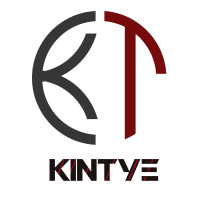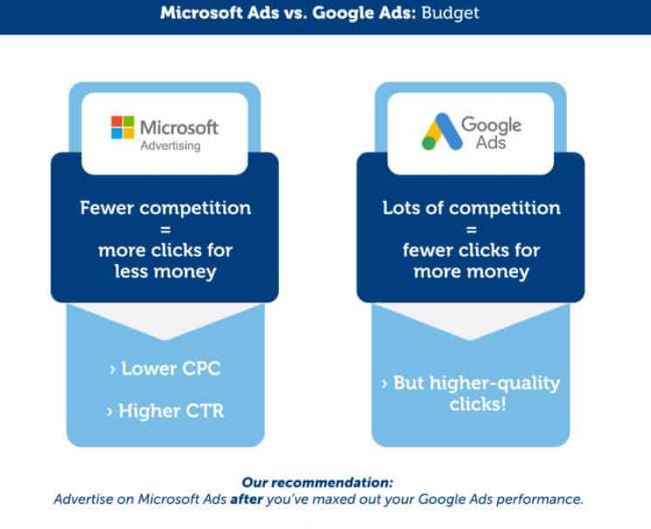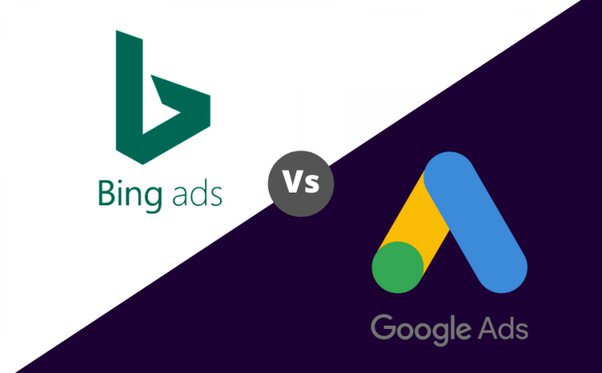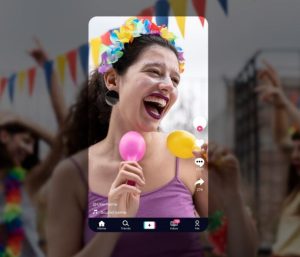Navigating the realm of online advertising leads to the crossroads of Bing Ads vs Google Ads for businesses. However, instead of viewing it as an either-or scenario, clever marketers understand the power of harnessing both platforms to maximise their reach and impact. Here at Kintye, we believe in leveraging the unique strengths of Bing Ads and Google Ads to create a comprehensive digital marketing strategy tailored to your business needs.
Let’s explore each platform in-depth and how their combined power can propel your online business to new heights.
What is Google Ads and How Does It Work?
It is essential to start by reviewing Google Ads to grasp the disparities between Bing Ads vs Google Ads. This is because Google Ads are paramount for businesses that aim to optimise their online visibility and engage with potential customers more efficiently.
Google Ads, previously known as AdWords, is a versatile advertising platform provided by Google. It enables businesses to display ads across various channels, including Google’s search results and partner websites within the Google Display Network.
Google Ads allows businesses to create ads in multiple formats, such as text, images, videos, and interactive content, catering to diverse marketing objectives. The platform encompasses several ad types and channels.
Here are some types of Google ads:
Search Ads (Paid Search): These ads appear at the top or bottom of Google search results when users search for specific keywords related to your products or services. By bidding on relevant keywords, businesses can ensure their ads are displayed to the right audience at the right time.
Display Network: Google’s Display Network offers an extensive array of websites, apps, and videos where businesses can showcase their ads. These ads can take the form of images, banners, or videos, allowing for visually engaging and targeted advertising.
Video Ads: Google video ads are displayed on YouTube and other partner websites, appearing before, during, or after a user watches a video. These ads can be skippable or non-skippable and come in various lengths, providing businesses with opportunities to engage with audiences through compelling video content.
Google Shopping Ads: These ads feature product images, prices and store information directly within Google search results. By leveraging Shopping ads, businesses can attract potential customers who are actively searching for products, driving traffic to their online stores.
App Ads: Designed to promote mobile apps across Google’s platforms, app ads help businesses reach users who are interested in downloading and engaging with mobile applications.
Businesses can benefit significantly from Google Ads. This platform can help improve online visibility, bring in targeted traffic, and effectively achieve marketing goals. Google Ads offers various solutions to meet advertising needs, such as increasing website traffic, generating leads, and boosting sales.
What is Bing Ads?
Now that we’ve understood Google Ads, let’s delve into Bing Ads to explore the differences between Bing Ads vs Google Ads.
Understanding Bing Ads, also called Microsoft advertising, is essential for businesses aiming to expand their online presence and effectively reach potential customers.
Microsoft Advertising provides a comprehensive pay-per-click (PPC) solution, allowing businesses to showcase their offerings across the Bing search network and its array of partner sites. These partners encompass renowned platforms like Yahoo!, DuckDuckGo, MSN, Xbox, Outlook, and AOL.
Like Google Ads, Microsoft Ads operates on a keyword-based advertising model. Advertisers bid on relevant keywords, displaying their ads to users when they search for those keywords on the Bing search engine. With Microsoft Search Ads, businesses can precisely target specific keywords and prominently appear in search results, driving relevant traffic to their websites.
Beyond Search Ads, Microsoft Advertising provides additional advertising options:
- Microsoft Audience Network: This network expands beyond the Bing search engine, encompassing partner websites and apps. Leveraging the Microsoft Audience Network enables businesses to reach a broader audience and enhance brand visibility across various online platforms.
- Shopping Campaigns: Analogous to Google Shopping Ads, Shopping Campaigns on Microsoft Ads allow businesses to showcase their products directly within search results. This feature is particularly advantageous for e-commerce businesses seeking to promote their products effectively.
- App Install Ads:These ads are tailored to promote mobile apps and are showcased across Microsoft’s diverse platforms, including Bing search results and partner websites. App Install Ads help businesses drive app downloads and increase user engagement on mobile devices.
By integrating Microsoft Ads (Bing Ads) into their digital advertising strategy, businesses can modify their advertising efforts and extend their reach beyond the Google Ads platform. Bing Ads vs Google ads offer businesses unique opportunities to engage with their target audience and effectively accomplish their marketing objectives.
The Main Difference Between Bing Ads vs Google Ads
When comparing Bing Ads vs Google Ads, it’s crucial to understand their unique characteristics and functionalities. Here’s a breakdown of the key differences between Google ads and Bing ads:
-
Market Share and Reach
Google dominates the search engine market with over 85% share, while Bing holds around 9%. This means Google Ads generally reaches a larger audience, although Bing’s integration with ChatGPT may alter this landscape in the future.
-
Cost and Competition
The Google Ads cost per click (CPC) is typically higher due to increased competition, while Bing Ads often offers a higher Return on Ad Spend (ROAS) due to lower auction prices.
-
Targeting Capabilities
Bing Ads boasts robust targeting features that make it an ideal choice for B2B marketing. As a default search engine on numerous office desktops, it offers a tremendous opportunity to reach a more affluent, educated, and older audience, particularly during work-related research. By leveraging Bing Ads, you can help widen your marketing reach and bolster your business growth.
-
Search Engine and Audience
Google Ads primarily displays ads on the Google search engine, catering to a diverse global audience. In contrast, Microsoft Advertising (Bing Ads) focuses on the Bing search engine and partner sites, reaching a potentially different audience, often skewed towards older demographics and specific niches.
-
Ad Networks and Formats
While Google Ads includes the extensive Google Display Network (GDN) and offers sophisticated ad formats, Microsoft Advertising focuses on a more streamlined approach, suitable for simpler campaigns. Each platform has its strengths and limitations in terms of ad formats and customisation options.
-
Keyword Mastery
Both platforms use keywords to trigger ads, but Google Ads provides more keyword match types and fine-tuning options than Microsoft Advertising.
-
Diverse Ad Reach Strategies
While both Bing Ads and Google Ads provide support for ad extensions, they offer different types and functionalities. Google Ads boasts a wider reach across various languages and countries, making it a preferred choice for advertisers looking to target a diverse audience.
On the other hand, Microsoft Advertising, while equally capable, may be more suitable for businesses targeting specific regions or demographics with its tailored ad extension options.
-
Mobile and App Promotions
Google Ads stands out in mobile and app advertising with its comprehensive options and extensive mobile ecosystem. With Google Ads, advertisers can effectively reach users across a wide range of mobile devices and apps, maximising their campaign’s exposure and potential impact.
While Microsoft Advertising also supports mobile and app ads, its reach may be somewhat more limited than Google’s, making it important for businesses to consider their target audience and advertising objectives when choosing between the two platforms.
-
Campaign Managing:
Bing Ads and Google Ads offer intuitive interfaces for managing advertising campaigns, but they differ in layout and available tools. While Google Ads may be favoured for its extensive range of features and customisation options, Microsoft Advertising provides a user-friendly platform with unique tools and capabilities.
In conclusion, while Bing Ads vs Google Ads present distinct advantages and target audiences, leveraging both platforms can maximise your reach and impact in the online advertising landscape.
Should I Advertise on Google and Bing?
After delving into the nuances of Bing Ads vs Google Ads, the question arises: should businesses advertise on both platforms? The answer lies in understanding each platform’s unique benefits and how they complement each other in a digital marketing strategy tailored to your business needs.
Google Ads undoubtedly holds a dominant position in digital advertising, boasting extensive reach and sophisticated targeting options. However, Bing Ads shouldn’t be overlooked, as it serves as a valuable addition to any PPC strategy, particularly for reaching specific demographics and filling gaps in online presence.
Advertising on both Google and Bing offers several advantages:
- Increased Visibility:Advertising on both platforms expands the visibility of your ads and enhances your chances of reaching a broader audience across different search engines.
- Performance Comparison: Advertising on both platforms allows you to compare the performance of your ads on each platform, enabling you to optimise your campaigns based on data-driven insights.
- Cumulative Effect:Leveraging both Bing Ads and Google Ads can result in a cumulative effect, where the combined performance of the two platforms yields greater overall results than advertising on either platform alone.
Choosing between Google Ads and Bing Ads depends on various factors such as budget, target audience, and campaign objectives. While Google Ads may be preferable for businesses seeking to reach a wide audience, Bing Ads could be more suitable for those with a smaller budget or targeting specific consumer demographics.
Many advertisers opt to use both platforms simultaneously to capitalise on their respective strengths and maximise their advertising ROI. By testing and comparing Google Ads and Bing Ads’ performance, businesses can determine the most effective approach for their unique needs, whether focusing on one platform or adopting a combination of both.
Ultimately, the decision to advertise on Google, Bing, or both depends on your business objectives and target audience. If you need clarification on the right approach, consulting with a digital marketing agency like Kintye can help you develop a customised advertising strategy tailored to your business goals.







